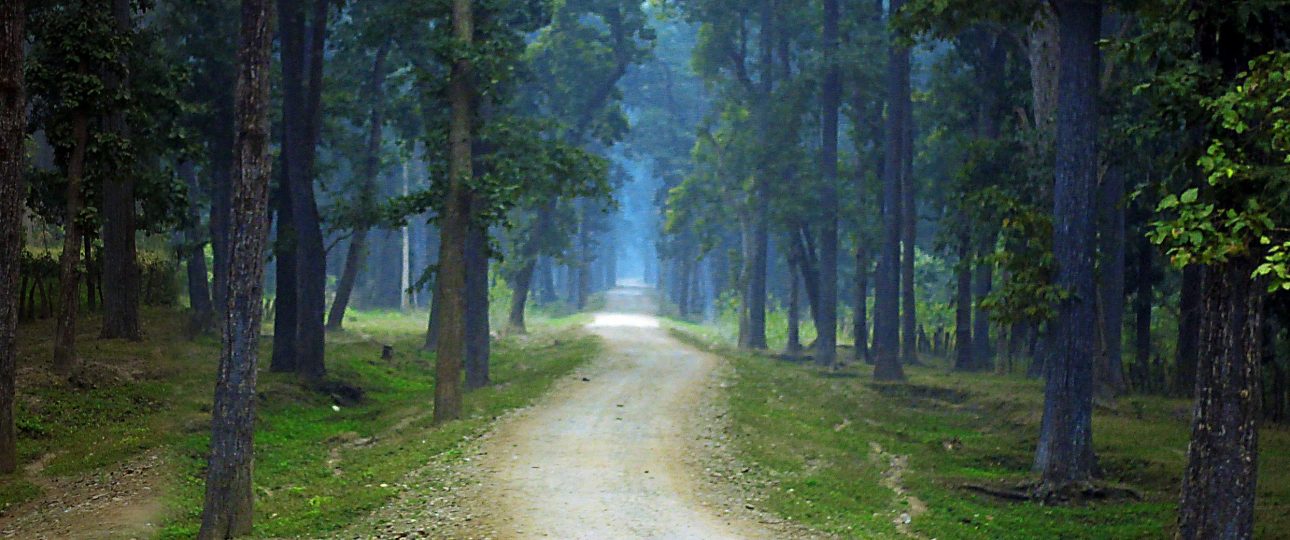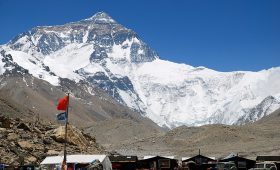Nestled in Nepal’s lowlands, Chitwan National Park stands as one of Asia’s premier wildlife destinations and a testament to successful conservation efforts. This UNESCO World Heritage site offers unparalleled opportunities to witness one-horned rhinoceros, elusive Bengal tigers, and over 500 bird species in their natural habitat.
## Understanding Chitwan National Park Safari Options
### Jeep Safari: The Premium Wildlife Experience
Jeep safaris provide the most comprehensive wildlife viewing experience in Chitwan. These 4-hour excursions penetrate deep into restricted zones where larger mammals congregate.
**What to expect:**
– Professional naturalist guides with extensive local knowledge
– Access to core tiger and rhino territories
– Comfortable seating for photography
– All-weather protection
– Small group sizes (maximum 6 people)
**Cost:** $35-50 USD per person for full-day excursions
**Best booking:** Reserve 2-3 days in advance, especially during peak season
### Elephant Safari: Traditional but Controversial
Traditional elephant safaris offer a unique vantage point but raise ethical concerns. Many responsible tour operators now limit or avoid elephant rides.
**Alternatives to riding:**
– Elephant bathing experiences (ethical)
– Elephant feeding and care programs
– Educational visits to elephant breeding centers
### Canoeing Safari: Silent Water Adventures
Canoe trips along the Rapti River provide peaceful wildlife encounters and excellent bird watching opportunities.
**Wildlife commonly spotted:**
– Gharial crocodiles (critically endangered)
– Mugger crocodiles
– Water birds including kingfishers and egrets
– River dolphins (rare but possible)
– Deer coming to drink
**Duration:** 1-2 hours
**Cost:** $15-25 USD per person
### Walking Safari: Close-to-Nature Experience
Guided jungle walks offer intimate wildlife encounters and detailed ecosystem education.
**Safety protocols:**
– Mandatory trained guides
– Groups limited to 8 people
– Specific designated walking zones
– Emergency communication equipment
## Optimal Timing for Chitwan Safaris
### Peak Season: October to March
**Why it’s ideal:**
– Clear weather with minimal rainfall
– Animals congregate around water sources
– Excellent visibility through sparse vegetation
– Comfortable temperatures (15-25°C)
– Perfect conditions for photography
**Wildlife activity patterns:**
– **Early morning (6-9 AM):** Peak animal activity, cooler temperatures
– **Late afternoon (3-6 PM):** Second wave of wildlife movement
### Shoulder Season: April-May
**Advantages:**
– Fewer crowds
– Lower accommodation prices
– Very high wildlife visibility due to dry conditions
– Pre-monsoon bird migration
**Challenges:**
– Higher temperatures (up to 35°C)
– Dusty conditions
– Limited shade during midday
### Monsoon Season: June-September
**Generally not recommended for safaris:**
– Heavy rainfall restricts vehicle access
– Dense vegetation obscures wildlife viewing
– Increased risk of malaria and other diseases
– Many lodges close temporarily
**Exception:** Serious bird watchers visit for migrant species
## Chitwan’s Incredible Wildlife Highlights
### The Big Five of Chitwan
#### One-Horned Rhinoceros
– **Population:** Over 600 individuals (significant conservation success)
– **Best spotting locations:** Grasslands near Kasara and Sauraha
– **Behavior notes:** Most active during cooler hours, often wallowing in mud
– **Photography tips:** Maintain 15-meter distance, use telephoto lenses
#### Bengal Tiger
– **Population:** Estimated 120-150 individuals
– **Sighting probability:** 10-15% per safari (higher with multiple trips)
– **Best zones:** Buffer zones and core areas accessible by jeep
– **Signs to watch for:** Pug marks, scratch marks on trees, alarm calls from deer
#### Asian Elephant
– **Population:** 200+ wild elephants
– **Behavior:** Highly intelligent, family-oriented herds
– **Safety:** Maintain significant distance, never approach on foot
– **Best viewing:** Early morning near river systems
#### Sloth Bear
– **Population:** Approximately 200 individuals
– **Characteristics:** Excellent tree climbers, primarily insectivorous
– **Spotting difficulty:** High (nocturnal and elusive)
– **Best chance:** Late afternoon safaris during fruit season
#### Leopard
– **Population:** Estimated 50-80 individuals
– **Habitat preference:** Forest edges and rocky areas
– **Sighting rarity:** Extremely rare due to nocturnal behavior
– **Camera traps:** Frequently captured but rarely seen by tourists
### Avian Diversity: Bird Watcher’s Paradise
With over 500 recorded species, Chitwan ranks among world’s top birding destinations.
**Must-see species:**
– Great Hornbill (endangered)
– Bengal Florican (critically endangered)
– Lesser Adjutant Stork
– Sarus Crane
– Various kingfisher species
– Colorful bee-eaters and barbets
**Best birding locations:**
– Bis Hazari Tal (20,000 Lakes)
– Rapti River corridors
– Forest edge habitats
– Community forestry areas
## Essential Safari Preparation Guide
### What to Pack
**Clothing essentials:**
– Neutral-colored clothing (khaki, olive, brown)
– Long-sleeved shirts for insect protection
– Comfortable hiking boots
– Wide-brimmed hat
– Lightweight rain jacket
**Equipment checklist:**
– Binoculars (8×42 recommended)
– Camera with telephoto lens
– Extra batteries and memory cards
– Flashlight/headlamp
– First aid kit basics
– Insect repellent (DEET-based)
– Sunscreen (SPF 30+)
### Health and Safety Preparations
**Vaccinations required:**
– Japanese Encephalitis
– Hepatitis A and B
– Typhoid
– Routine vaccinations (MMR, tetanus)
**Malaria prevention:**
– Consult healthcare provider for prophylaxis
– Use insect repellent religiously
– Sleep under bed nets
– Wear long sleeves during evening hours
**Travel insurance:**
– Ensure coverage includes adventure activities
– Medical evacuation coverage recommended
– Wildlife encounter liability coverage
## First-Timer’s Success Strategies
### Booking Accommodations
**Inside the park (premium experience):**
– Kasara Jungle Lodge
– Temple Tiger Green Jungle Resort
– Advanced booking essential (6+ months)
**Sauraha village (budget to mid-range):**
– Chitwan Village Resort
– Green Park Chitwan
– Hotel Parkland
– Walking distance to park entrance
### Maximizing Wildlife Sightings
**Multi-day strategies:**
– Book minimum 3 days for diverse experiences
– Combine different safari types
– Schedule both morning and afternoon safaris
– Include rest day for birding walks
**Guide selection:**
– Request experienced naturalist guides
– Ask about specific animal expertise
– Inquire about photography support
– Verify language proficiency
### Photography Excellence Tips
**Camera settings for wildlife:**
– Shoot in RAW format
– Use continuous autofocus (AI Servo/AF-C)
– Higher ISO settings acceptable (wildlife moves fast)
– Faster shutter speeds (1/500s minimum for moving animals)
**Behavioral photography:**
– Capture interactions, not just portraits
– Focus on eyes for compelling shots
– Patience yields better results than rushing
– Respect wildlife stress signals
## Sustainable and Eco-Friendly Safari Practices
### Choosing Responsible Operators
**Green criteria:**
– TAAN (Trekking Agencies Association of Nepal) certification
– Local community employment
– Waste management policies
– Carbon offset programs
– Wildlife harassment policies
**Questions to ask tour operators:**
– How do you minimize environmental impact?
– What percentage of guides are local?
– Do you support community conservation projects?
– What are your wildlife interaction policies?
### Conservation Support Options
**Direct contributions:**
– Visit National Trust for Nature Conservation projects
– Support anti-poaching initiatives
– Contribute to community forest programs
– Participate in citizen science projects
**Responsible behaviors:**
– Follow Leave No Trace principles
– Never feed wild animals
– Maintain respectful distances
– Report illegal activities to authorities
### Community-Based Tourism
**Tharu cultural experiences:**
– Traditional village visits
– Authentic Tharu cuisine tastings
– Cultural dance performances
– Local handicraft workshops
**Benefits of community tourism:**
– Direct economic benefits to locals
– Cultural preservation incentives
– Reduced pressure on park resources
– Authentic cultural exchange
## Budget Planning and Cost Optimization
### Safari Package Comparisons
**Budget option (2 days/1 night):**
– Accommodation: $20-30/night
– Jeep safari: $35-45
– Canoe trip: $15-20
– Jungle walk: $10-15
– **Total: $80-110 per person**
**Mid-range option (3 days/2 nights):**
– Accommodation: $50-80/night
– Multiple safaris: $120-150
– Cultural activities: $25-35
– All meals included
– **Total: $195-265 per person**
**Premium option (4 days/3 nights):**
– Luxury lodge: $150-300/night
– Private guided experiences: $200-350
– Specialized photography tours: $100-150
– **Total: $450-800 per person**
### Money-Saving Strategies
**Group booking advantages:**
– Safari costs divided among participants
– Bulk accommodation discounts
– Shared transportation costs
– Group guide rates
**Seasonal pricing variations:**
– Off-season discounts (April-May): 20-30% savings
– Early booking incentives: 10-15% discounts
– Local operator direct booking: Avoid middleman margins
## Extending Your Chitwan Experience
### Nearby Attractions Worth Visiting
**Bis Hazari Tal (20,000 Lakes):**
– Wetland bird sanctuary
– 45-minute drive from Sauraha
– Best visited December-February
– Excellent photography opportunities
**Devghat:**
– Sacred Hindu pilgrimage site
– Confluence of Seti and Kali Gandaki rivers
– 2-hour drive from Chitwan
– Cultural and spiritual significance
**Bandipur:**
– Historic hilltop town
– Traditional Newari architecture
– 3-hour scenic drive
– Perfect for cultural immersion
### Combination Trip Ideas
**Wildlife and Culture Circuit:**
Day 1-3: Chitwan National Park
Day 4-5: Bandipur cultural exploration
Day 6-7: Pokhara lakeside relaxation
**Nepal Triangle Adventure:**
Week 1: Kathmandu cultural sites
Week 2: Chitwan wildlife experience
Week 3: Everest Base Camp trek
Chitwan National Park represents Nepal’s greatest conservation success story and offers visitors an unmatched opportunity to witness incredible biodiversity while supporting crucial wildlife protection efforts. Whether you’re a serious wildlife photographer, bird enthusiast, or simply nature lover, Chitwan’s carefully managed ecosystems provide unforgettable encounters with some of Asia’s most magnificent creatures.
**Ready to experience Nepal’s premier wildlife destination?** Contact Imperial Holidays to craft your perfect Chitwan safari adventure, complete with expert guides, comfortable accommodations, and responsible wildlife encounters that contribute to conservation efforts while creating memories that last a lifetime.


